Two parallel discs are connected by a rigid rod of length L =0.5 m centrally. Each disc has a slit oppositely placed as shown in the figure. A beam of neutral atoms are incident on one of the discs axially at different velocities v, while the system is rotated at angular speed of 600 rev/second so that atoms only with a specific velocity emerge at the other end. Calculate the two largest speeds (in meter/second) of the atoms that will emerge at the other end.
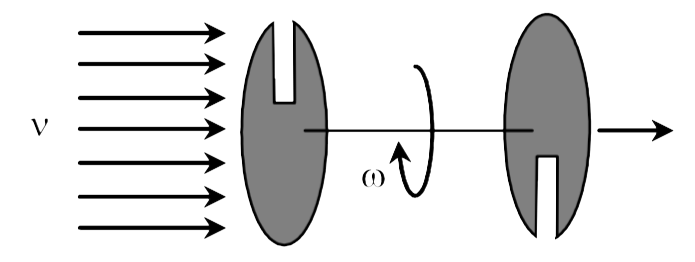
75, 25
100,50
300,100
600,200
The correct Answer is:D
Step by step video, text & image solution for Two parallel discs are connected by a rigid rod of length L =0.5 m centrally. Each disc has a slit oppositely placed as shown in the figure. A beam of neutral atoms are incident on one of the discs axially at different velocities v, while the system is rotated at angular speed of 600 rev/second so that atoms only with a specific velocity emerge at the other end. Calculate the two largest speeds (in meter/second) of the atoms that will emerge at the other end. by Physics experts to help you in doubts & scoring excellent marks in Class 12 exams.
Topper's Solved these Questions
Similar Questions
A wide bottom cylindrical massless plastic container of height 9 cm has 40 identical coins inside it and is floating on water with 3 cm inside the water. If we start putting more of such coins on its lid. It is observed that after N coins are put, its equilibrium changes from stable to unstable. Equilibrium in floating is stable if the geometric center of the submerged portion is above the center of mass of the object) The value of N is closed to
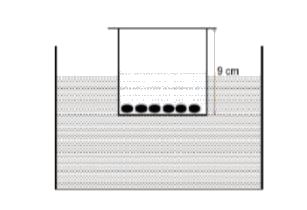 03:49View Solution
03:49View Solution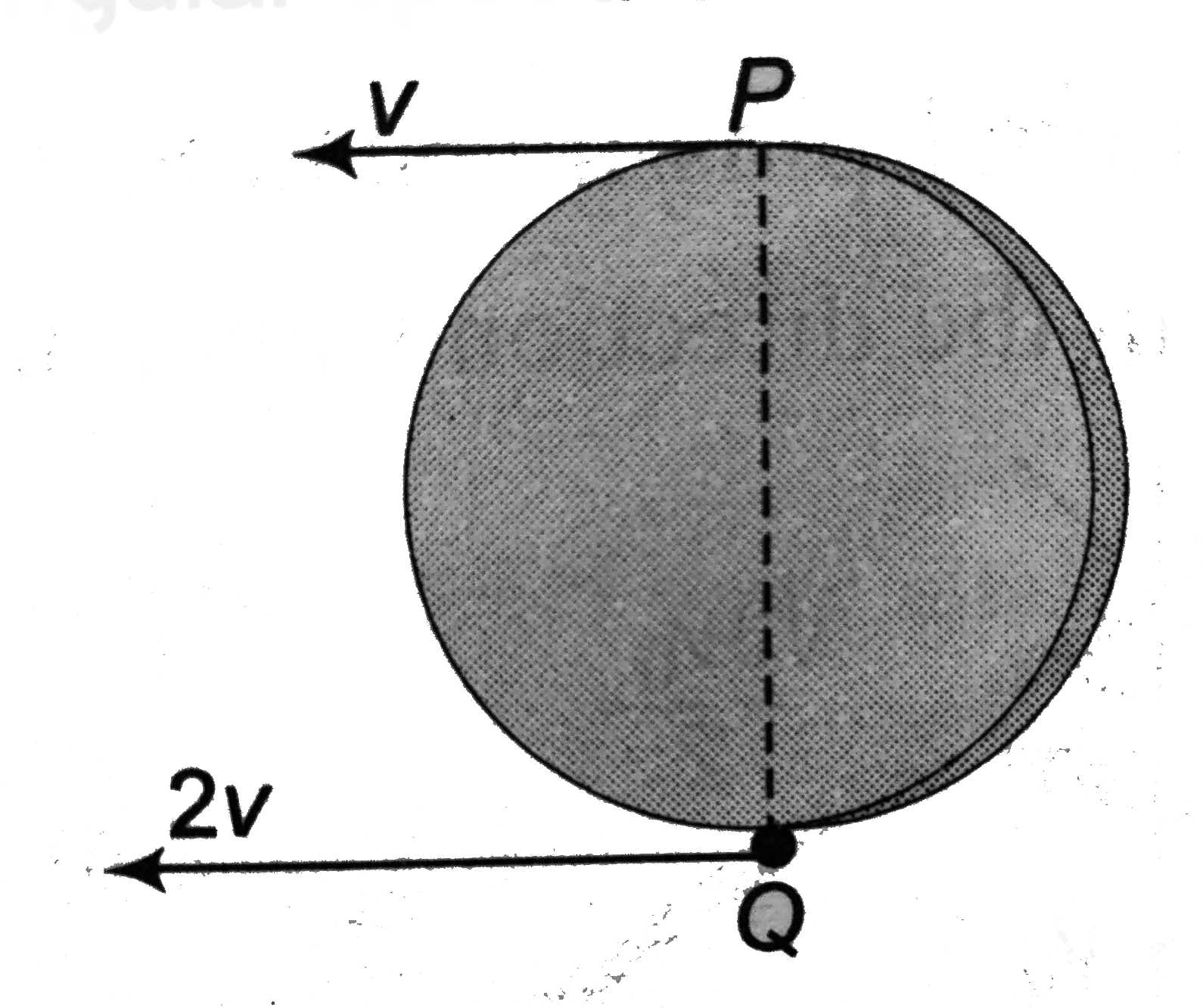
Two point P and Q. diametrically opposite on a disc of radius R have linear velocities v and 2v as shown in figure. Find the angular speed of the disc.03:27View Solution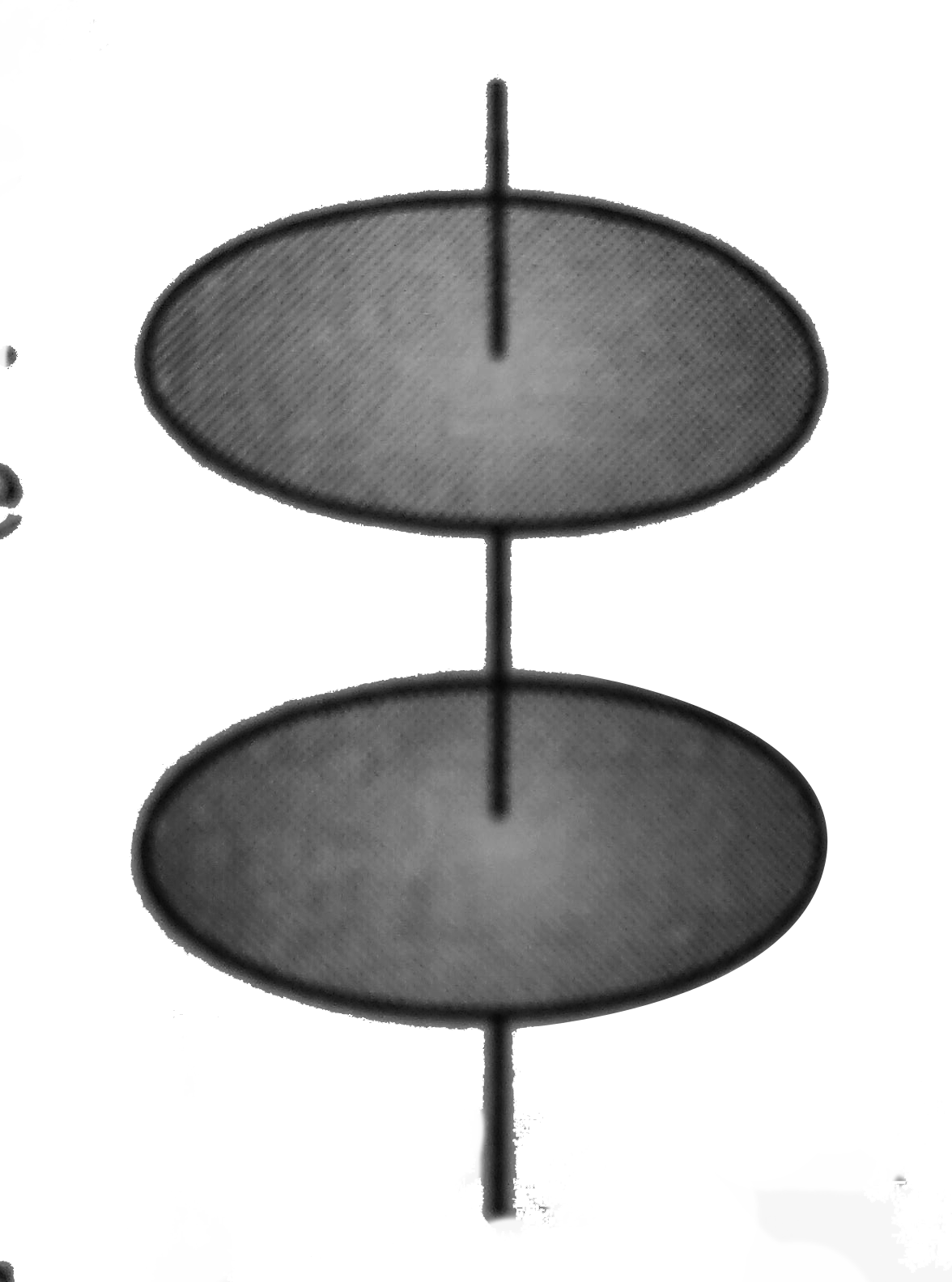
Two identical discs are positioned on a vertical axis as shown in the figure. The bottom disc is rotating at angular velocity ω0 and has rotational kinetic energy K0. Change in the rotational kinetic energy of the system is03:10View SolutionA rough disc of mass m rotates freely with an angular velocity ω. If another rough disc of mass m2 and same radius but spinning in opposite sense with angular speed ω is kept on the first disc. Then:
03:27View SolutionA disc of radius R has a light pole fixed perpendicular to the disc at its periphery whish in turn has a pendulum of legth R attached to its other end as shown in figure. The disc is rotated with a constant angular velocity ω The string is making an angle 45∘ with the rod. Then the angular velocity ω of disc is
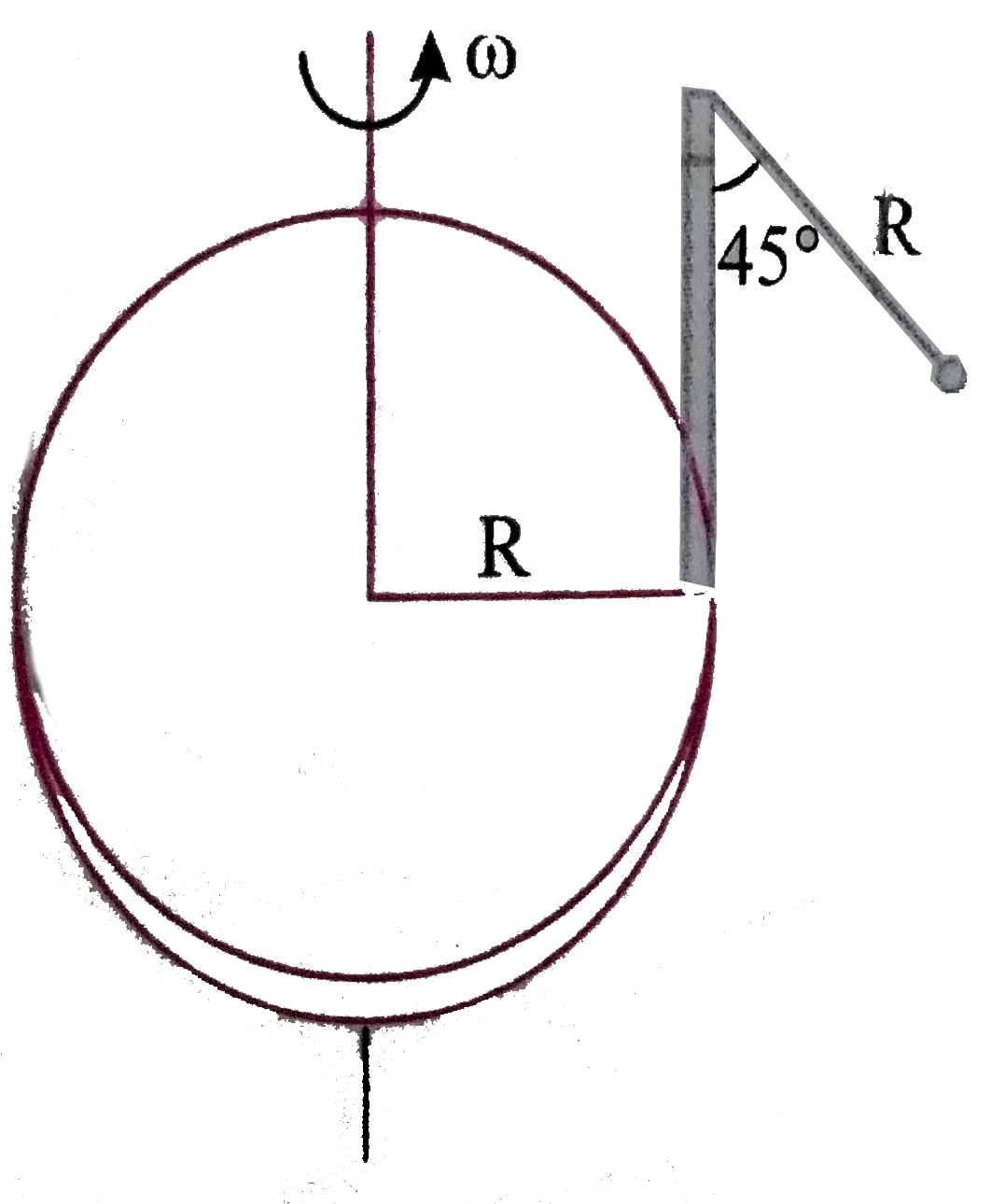 View Solution
View SolutionA disc of radius a is ridigly attached at its circumference to a rod of length 3a and the combination suspeded vertically from the other end of the rod. It is swinging in the plane of the disc such that the centre of disc has velocity v . If mass of disc and rod is m
View SolutionA uniform disc of mass M and radius R is rotating freely about its central vertical axis with angular speed w0. Another disc of mass m and radius r is free to rotate about a horizontal rod AB. Length of the rod AB isL(<R) and its end A is rigidly attached to the vertical axis of the first disc. The disc of mass m, initially at rest, is placed gently on the disc of mass M as shown in figure. Find the time after which the slipping between the two discs will cease. Assume that normal reaction between the two discs is equal to mg. Coefficient of friction between the two discs is μ.
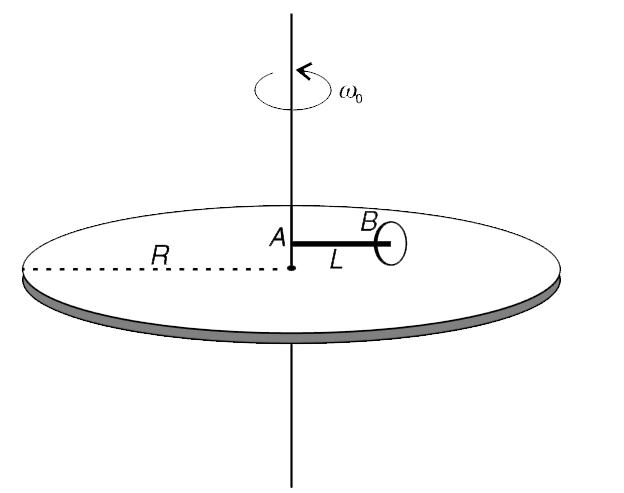 03:32View Solution
03:32View SolutionA smooth disc of mass M and radius (L)/(sqrt(3)) is placed at rest horizontally on a smooth horizontal surface. A massless pin is fixed at point P at a distance L//2 from centre O of the disc as shown in the figure. Now a thin uniform rod of mass M and length L is placed horizontally on the surface of the disc parallel to the line OP such that its mid point and centre O of the disc just coincide as shown in figure. Now rod has given angular velocity omega_(0)=24 rad//sec in counter clockwies direction as shown. As a result, the end of the rod strikes the pin P and stricks to it rigidly. Calculate the angular velocity of disc just after collision.
03:38View SolutionA circular disc of mass M and radius R is rotating with angular velocity ω . If two small spheres each of mass m are gently attached to two diametrically opposite points on the edge of the disc, then the new angular velocity of the disc will be
04:13View SolutionAn ant is sitting at the edge of a rotating disc. If the ant reaches the other end, after moving along the diameter, the angular velocity of the disc will:-
View SolutionA circular disc is rotating about its natural axis with angular velocity of 10 rads-l. A second disc of same mass is joined to it coaxially. If the radius of disc is half of the radius of the first, then they together rotate with an angular velocity of
View SolutionTwo identical discs are placed one over the other and both are rotating about a common axis through their centre and normal to their frame with angular velocity (. If the upper disc is suddenly removed, anguler velocity of the other disc would be
04:44View SolutionTwo identical disc are placed one over the other and both are rotating about a common axis through their centre and normal to their frame with angular velocity omega . If the upper disc is suddenly removed, angular velocity of the other disc would be
View SolutionA thin circular disc of mass 'm' and radius R is rotating bout its axis with a constant angular velocity omega . It has two masses each of mass 'm' (same mass as that of disc) at the opposite ends of a diametre of the disc. Now if the masses are gently removed, the final angular velocity of disc would become
03:04View SolutionTwo point P and Q. diametrically opposite on a disc of radius R have linear velocities v and 2v as shown in figure. Find the angular speed of the disc.
 03:00View Solution
03:00View Solution

